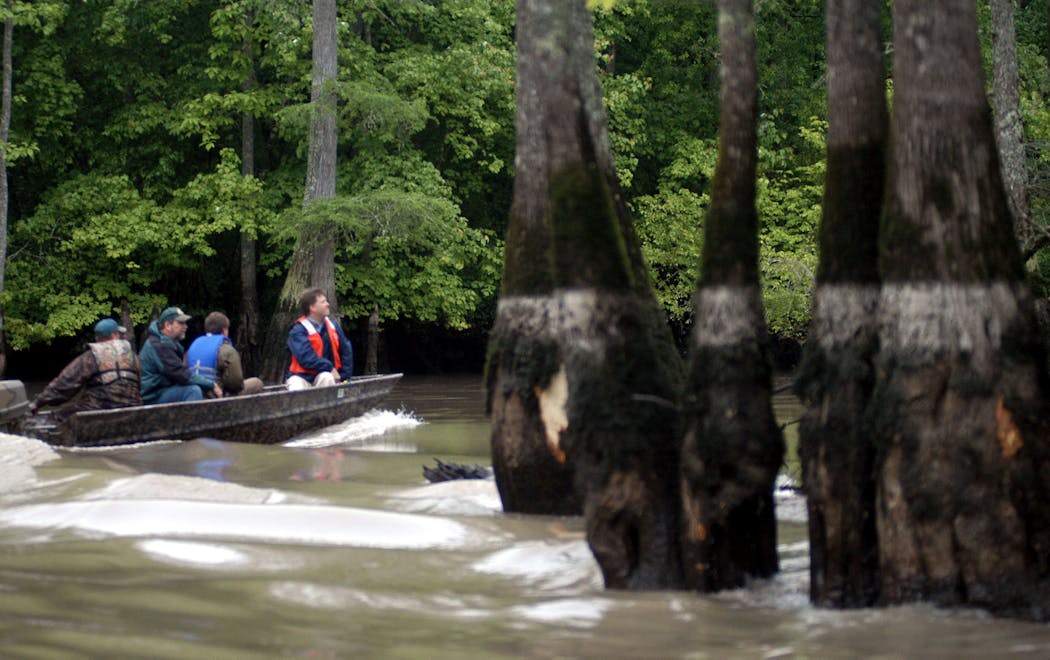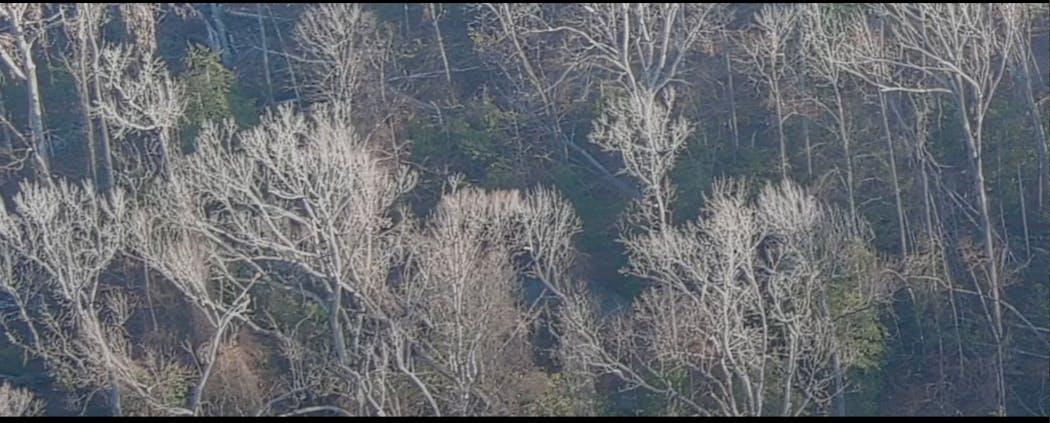The decades-long search for evidence of living ivory-billed woodpeckers awaits a decision this spring from the U.S. Fish and Wildlife Service (FWS) on video evidence that the species has survived.
Videotape recorded from a drone was given to the FWS in July 2022, shortly and coincidentally after the service announced its intent to remove the woodpecker from the endangered species list and declare it extinct.
The videos were made of a bird that "is clearly a woodpecker and is inconsistent with anything but ivory-bill," according to the man who organized the drone flights.
He is Mark Michaels, a New York resident and true believer who has been searching for the bird in a particular area of Louisiana for 15 years.
The recordings were made in February 2021 using drone flights organized by Michaels. The drones flew for 2,590 hours. There are 864 hours of video which, after editing by Michaels, produced just more than a minute of the bird in flight and perched in a Louisiana woodland, location secret.
Those brief clips contain what could be considered the best evidence of survival collected yet: The bird's flight pattern identifies it as a woodpecker, and plumage gives ample opportunity for an observer to say it certainly looks like this long-missing species.
The drones flew just below the 400-foot Federal Aviation Administration restriction. Flights averaged 20 to 25 minutes each. The camera ran throughout the flights.
You can view the videos and read a complete history of the total search effort at https://bit.ly/3k2hjDA.
Initially, Michaels worked in partnership with a local man, Frank Wiley, now deceased. He told Michaels he had seen the bird several times in an area near his home. They made extensive search efforts under the name Project Coyote, a reference to Wiley's name.
More recently the project was joined by the National Aviary, a part of the Pittsburgh zoo focused on birds. The search effort now is called Project Principalis. (The ivory-billed's scientific name is Campephilus principalis.)
The evidence will be submitted to the ornithological community for examination. The video and its story have yet to be peer-reviewed. The announcement from the FWS is "anticipated for spring," according to an agency spokesman.
Why isn't there a photo?
There are no known acceptable photographs of an ivory-billed woodpecker. That's because circumstance makes it all but impossible.
You're carrying a camera, usually with the weight of a telephoto lens. The bird spooks very easily, giving no warning. It probably sees or hears you before you see it.
Its departure and flight are very fast, too fast for your necessary reaction — the immediate positioning of camera at eye, positioning the image of the moving bird in the lens, achieving proper focus.
An observation team in Arkansas in 2005 included skilled photographers. The only images captured were on three seconds of video recorded by a camera filming continuously while it was attached to a canoe paddle leaning on a gunnel, and almost pointed in the right direction.
If you held that camera, recording, at ready, you might have to hold it for hours before a rare encounter with the bird. (The woodpecker probably would be seen a few seconds after you laid the camera in the bottom of the canoe.)
There are many photographs, by the way. There are no focused photos, however.
How to watch the video
It is best viewed on a large screen. The menu page scrolls down to "New Un-enhanced Crops of Drone Clips at Full Speed."
In the clip labeled "Full flight 4 and landing," the bird is flying across the lower portion of the frame, left to right, initial flight mostly obscured by trees.
The bird becomes clearly visible at 13 seconds as it crosses the obvious opening in the trees. The bird can be followed as it lands on the large tree at extreme right.
In the clip "close crop of landing" the bird appears at 3 seconds, entering field of vision at the bottom of the image just left of center.
The clip "flight five" shows the bird moving left to right just above screen center, dropping out of the stand of trees on the left side at 18 seconds, and continuing flight into the trees on the right.
Watch the bird's behavior after landing. It displays the hitching movement typical of woodpeckers.
Lifelong birder Jim Williams can be reached at woodduck38@gmail.com.

3 hearty salads to kick off salad season
Ask Amy: Late mom's behavior still an issue

TV review: Bon Jovi documentary goes down in a blaze of boredom

The Biden administration is tweaking rules on airline fees and refunds, saying it'll help consumers




